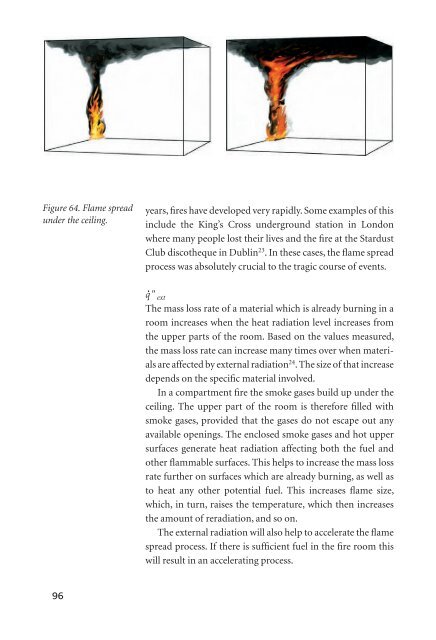Create successful ePaper yourself
Turn your PDF publications into a flip-book with our unique Google optimized e-Paper software.
Figure 64. Flame spread<br />
under the ceiling.<br />
96<br />
years, fi res have developed very rapidly. Some examples of this<br />
include the King’s Cross underground station in London<br />
where many people lost their lives and the fi re at the Stardust<br />
Club discotheque in Dublin 23 . In these cases, the fl ame spread<br />
process was absolutely crucial to the tragic course of events.<br />
q" ext<br />
The mass loss rate of a material which is already burning in a<br />
room increases when the heat radiation level increases from<br />
the upper parts of the room. Based on the values measured,<br />
the mass loss rate can increase many times over when materials<br />
are affected by external radiation 24 . The size of that increase<br />
depends on the specifi c material involved.<br />
In a compartment fi re the smoke gases build up under the<br />
ceiling. The upper part of the room is therefore fi lled with<br />
smoke gases, provided that the gases do not escape out any<br />
available openings. The enclosed smoke gases and hot upper<br />
surfaces generate heat radiation affecting both the fuel and<br />
other fl ammable surfaces. This helps to increase the mass loss<br />
rate further on surfaces which are already burning, as well as<br />
to heat any other potential fuel. This increases fl ame size,<br />
which, in turn, raises the temperature, which then increases<br />
the amount of reradiation, and so on.<br />
The external radiation will also help to accelerate the fl ame<br />
spread process. If there is suffi cient fuel in the fi re room this<br />
will result in an accelerating process.

















